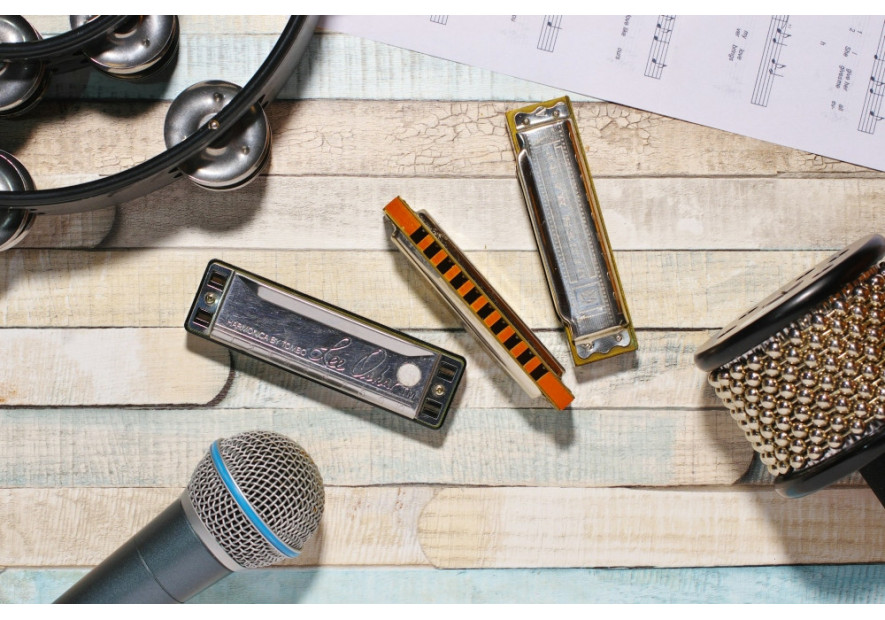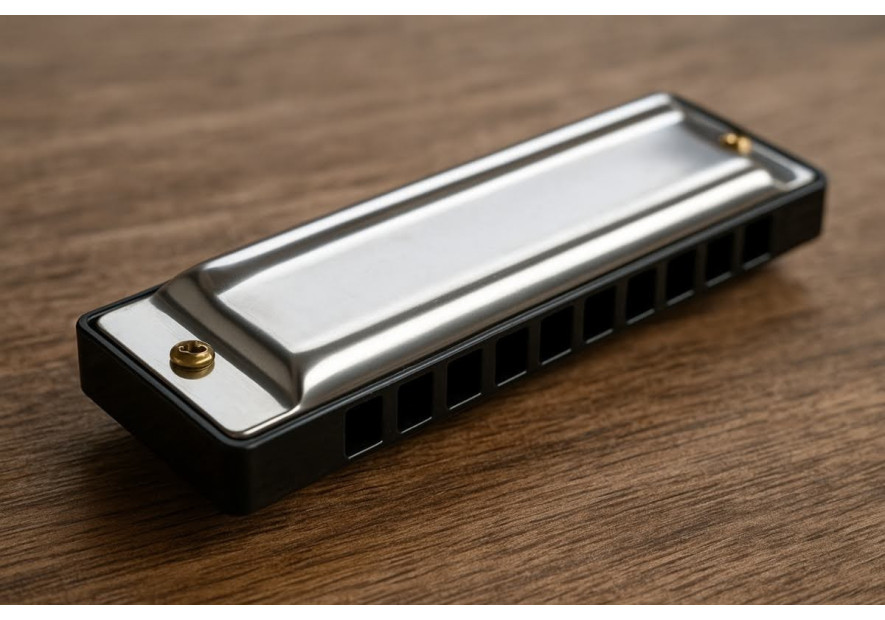How to Read Harmonica Tabs | Your Ultimate Beginner’s Guide

So you’ve picked up a harmonica, and maybe you’ve even toyed around with a few notes. You love that raw, soulful sound—but every time someone says “just follow the tabs,” your brain kind of short-circuits. Tabs? Like guitar tabs? Sort of. But not exactly.
Learning to play the harmonica takes time and a fair bit of patience. Reading harmonica tabs is one of those small-but-crucial steps that unlock your ability to play real songs, without needing to read traditional sheet music.
Whether you're jamming along to a blues riff or trying to nail that folk melody you love, tabs are the language that makes it all possible.
Let’s break it down simply, without the fluff or theory overload.
What Are Harmonica Tabs, Anyway?
Harmonica tabs—short for tablature—are a simplified way to notate music specifically for harmonica players. Unlike sheet music, which requires knowledge of pitch and rhythm on a staff, tabs show you what holes to play and how to play them.
The numbers correspond to the holes on your harmonica, usually a standard 10-hole diatonic. A basic tab might look something like this:
4 -4 5 -5 6
That’s a line you’ll see a lot, and here’s how to interpret it:
- Numbers without signs (like 4, 5, 6) = blow into that hole
- Numbers with a minus sign (like -4, -5) = draw (inhale) from that hole
It’s intuitive once you get the hang of it—no musical degrees required. Just a bit of breath control and some patience.
The Basics You Need Before You Even Start
Before you get deep into reading harmonica tabs, make sure you’re not missing the obvious stuff. It sounds silly, but it's incredibly common for beginners to make mistakes with the basics, like how you hold the harp.

Your grip should be relaxed but firm, with your hands forming a kind of cup around the instrument for tone control.
And then there’s breath. People underestimate this constantly. You’re not just blowing like it’s a birthday candle.
Controlled breathing—both in and out—is what gives you that smooth, expressive sound. Tabs tell you what to play, but breath tells you how to make it sing.
Common Symbols and What They Actually Mean
Once you're comfy with numbers and minus signs, you'll start seeing extra symbols tossed into the mix. Let’s decode the usual suspects:
- ‘ - ’ (minus sign): Draw (inhale)
- Number only (no sign): Blow (exhale)
- ‘` (apostrophe or apostrophes): Bends. For example, -4' means draw a bend on hole 4
- ‘/’ or ‘\’: Sometimes used to show slides between holes
- Letters (rare, but they happen): Indicate articulation or hand effects like ‘v’ for vibrato or ‘h’ for hand wah
And yeah, tabs can vary a bit depending on the source. Some use parentheses, some use arrows—it’s not standardized like traditional notation. So if you feel confused switching between versions, you're not alone.
But over time, your brain starts to filter it all in automatically, like driving a stick shift after years of automatic.
Practicing Tabs Without Losing Your Mind
Now that you're a bit more comfortable reading harmonica tabs, the next step is, well, playing them. But here's the thing: don’t just jump into full songs right away.
Take it easy in the beginning; there’s no need to rush. Stick with simple, beginner-friendly techniques and practice slow, repetitive riffs—stuff like “Oh! Susanna” or “When the Saints Go Marching In.”
They're simple, melodic, and let you focus more on breathing and hole accuracy than on flashy solos.
Try this beginner-friendly tab for the melody of “Mary Had a Little Lamb”:
5 -4 4 -4 5 5 5
Play it slowly. Focus on the breath and on hitting the correct holes. Don’t stress if it sounds squeaky at first—that’s part of the charm (and the process).
Also, if you’re struggling to play clean notes, consider using a harmonica holder so you can free up your hands and focus on breathing.
What About Rhythm?
Here’s where tabs fall a little short: they often don’t include rhythm. That means you need to know how the song sounds—or have a recording to follow along with.
But there are a few workarounds:
- Listen to the song before you play
- Use a metronome (yes, seriously—it helps)
- Tap your foot while playing to keep time
Eventually, you'll feel the rhythm intuitively. But early on, it’s okay to “cheat” by listening and mimicking. That’s how most harmonica legends learned anyway—by ear, by feel, not by textbooks.
Your Mouth Position Matters More Than You Think
Let’s talk embouchure for a sec. That’s a fancy word for how your mouth sits on the harmonica. Some beginners try to play with their lips too wide, covering multiple holes by accident. That makes even the easiest tabs feel impossible.
Try puckering your lips slightly—like you’re sipping through a straw—to isolate single notes. Once you get the hang of that, you can move on to techniques like tongue-blocking and octave playing.
But honestly? Keep it simple for now. One clean note is worth a hundred messy ones.
Ready to Play Something Real?
Okay, maybe you've practiced a few nursery tunes and you're itching to try something with a bit more grit. Look for simplified versions of blues riffs or old country standards.

They’re rich in tone but easy on structure, and they usually rely on just a few holes.
A great beginner blues line might look like this:
-4 -4 -4 -4 5 -4
It’s repetitive, raw, and sounds like you mean it. And once you nail that, you're ready to start improvising—yes, even as a beginner. Just follow the tabs until your muscle memory starts writing its own.
Wrapping It Up: Where to Go from Here?
Reading harmonica tabs doesn’t require a music theory degree, years of experience, or even the ability to read standard sheet music.
What it does take is patience, a decent ear, and the willingness to slow down and let your fingers—and lungs—learn the layout.
And here’s the cool part: once you’re fluent in tabs, the entire world of harmonica music opens up. From classic blues to pop covers, everything becomes playable—one hole at a time.
If you’re looking for quality gear to support your journey—something responsive, comfortable, and stage-ready—HARMO’s top-quality harmonicas for sale are built with beginners and professionals in mind.
Because let’s face it: learning is easier (and way more fun) when your instrument wants to play along. Contact us today and let’s find you a harp that actually makes you want to keep practicing!



Leave a comment